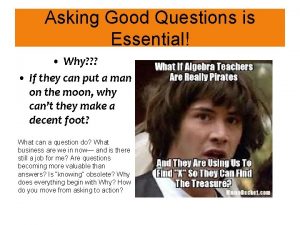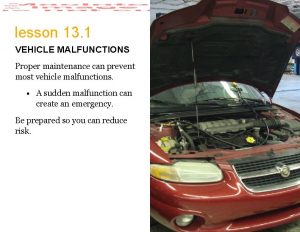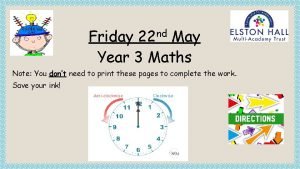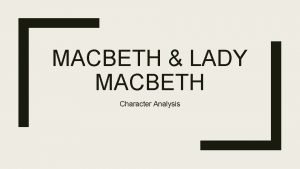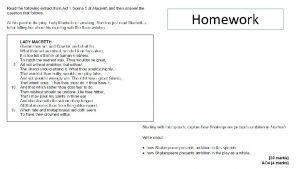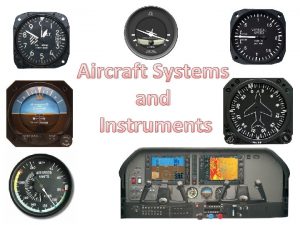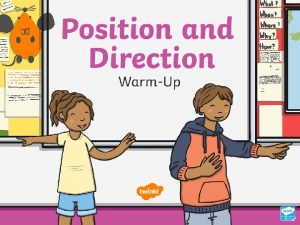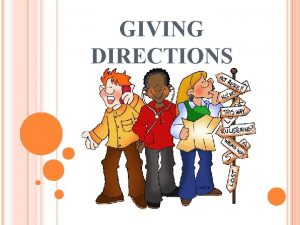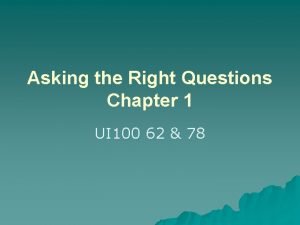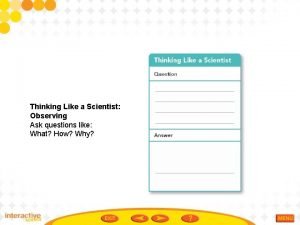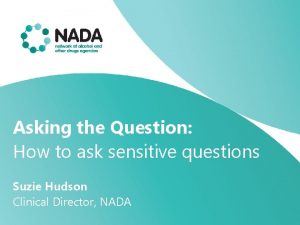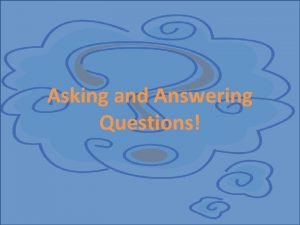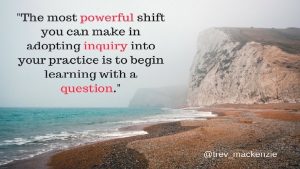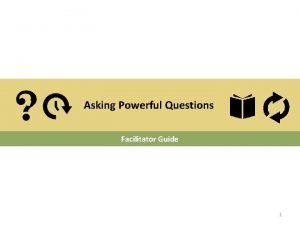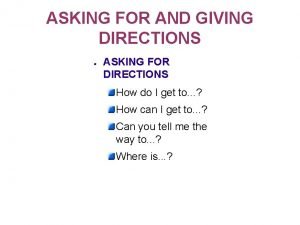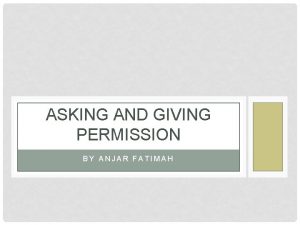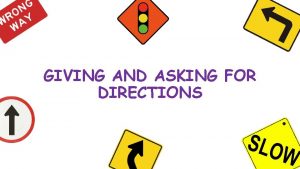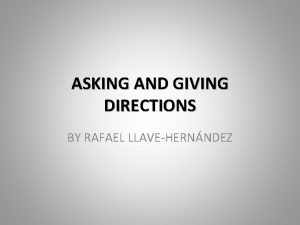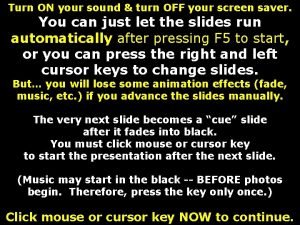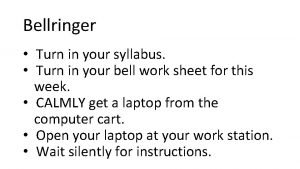Asking Essential Questions Activity How to turn your




















- Slides: 20


Asking Essential Questions Activity How to turn your topic into a question

The Right Question Technique by Dan Rothstein & Luz Santana

Essential Question Process 1. Choose a question focus 2. Produce questions 3. Look at closed vs open-ended questions 4. Flip questions 5. Prioritize questions

Step 1: Choose your Question Focus -With your partner, pick a topic from one of your subject areas that you are currently learning in. For example: The solar system is part of the Milky Way, which is one of billions of galaxies. (Grade 9 Science) Another example: The Pythagorean Theorem is used to establish the lengths of sides of triangles.

2 minutes to choose your focus

Step 2: Ask and Share Questions -Ask and list as many questions as possible about your focus area. Ex. What is a galaxy? How can we measure a galaxy? -List questions as they were posed, don’t stop to judge, edit or revise questions! -Flip any statements into questions

5 minutes to gather questions

Step 3: Closed vs Open Questions Open-Ended vs. Closed-Ended Questions


Open-Ended Questions: Encourages more explanation and deeper thinking. Which one, what if, how, should, why. Ex: Who was impacted most negatively when BC joined confederation? Close-Ended Questions: Can be answered with a yes or no, or a simple one word response. Ex: When did BC join confederation?

3 minutes to categorize questions

Step 4: Flip Questions Open-Ended to Closed-Ended

5 minutes to flip questions

Step 5: Prioritize Questions Which questions will lead you towards deep learning and critical thinking?

3 minutes to prioritize questions

Step 6: Select your essential question

Reflect

Reflection: 1. Going through this process will help you discover an area of specific interest that you can then “dive into”. 2. The goal is for you to come up with a question that is MEANINGFUL for your interests. 3. How does the idea of coming up with your own questions to answer make you feel?

Here is the question that I came up with using this process for our story telling unit: How can the perspective a story is told in change the interpretation of that same story? With your partner, discuss ways you could try to answer the question.
 Essential question definition
Essential question definition Asking scientific questions activity
Asking scientific questions activity If your vehicle malfunctions, turn on your hazard lights
If your vehicle malfunctions, turn on your hazard lights You can't turn left
You can't turn left Turn hell hound turn
Turn hell hound turn Answer. go straight turn left turn right
Answer. go straight turn left turn right Turn the arrow 1/4 turn clockwise
Turn the arrow 1/4 turn clockwise Valiant cousin meaning
Valiant cousin meaning Macbeth seeing banquo's ghost quote
Macbeth seeing banquo's ghost quote Walk straight turn right turn left
Walk straight turn right turn left Themes about guilt
Themes about guilt Atomatoeflames
Atomatoeflames Put your right hand in
Put your right hand in Go straight and turn left
Go straight and turn left Plamatic acid
Plamatic acid Question tag intonation rules
Question tag intonation rules Present continuous uitleg
Present continuous uitleg Sponge approach
Sponge approach Observing and asking questions
Observing and asking questions Nadabase
Nadabase You always answer the questions in spanish
You always answer the questions in spanish
